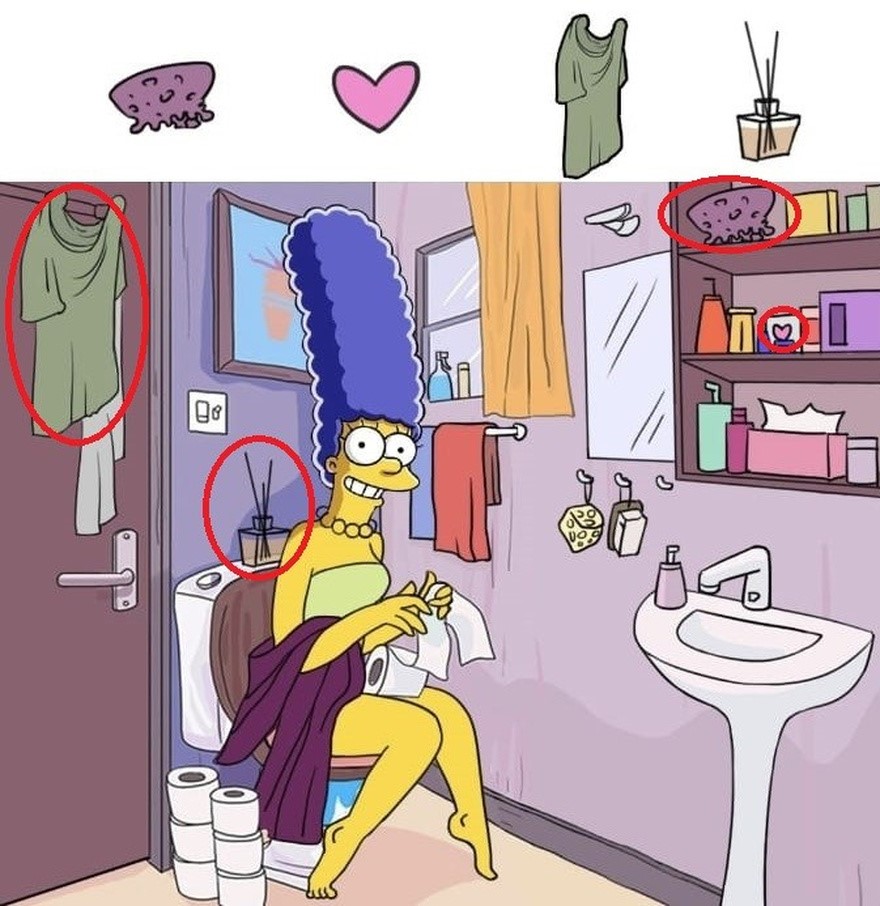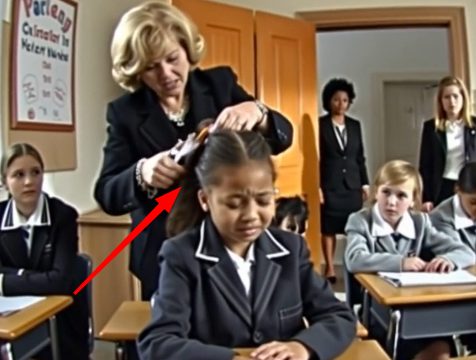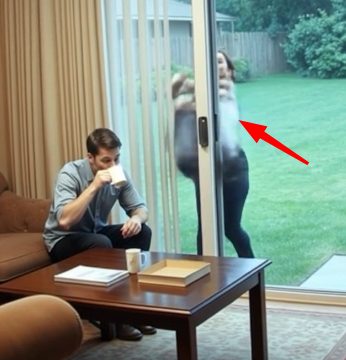Do you have the kind of eagle eyes that can catch what most people miss? It’s time to put your visual skills to the test with a brain-teasing optical illusion that’s got the internet buzzing. Hidden in the middle of a cartoonishly chaotic bathroom scene are four cleverly disguised items: a purple sponge, a pink heart, a green shirt, and a scent diffuser. Sounds simple enough, right? Well, there’s a catch—you’ve only got 23 seconds to find them all.

At first glance, it might look like just a cluttered bathroom with too much going on. But once you know you’re supposed to find specific items, your brain kicks into overdrive. And that’s where the fun (and frustration) really begins. You’ll catch yourself squinting, zooming in, and second-guessing your eyes—”Is that the sponge or just a trick of the light?” Welcome to the world of optical illusions, where your eyes and brain don’t always agree.
So, what makes puzzles like this so addictive? For one, they’re more than just a casual distraction. They actively engage your brain in a meaningful way. Ever searched for your keys, only to discover they were right on the table all along? That’s your brain filtering out visual information it doesn’t think you need at the moment—a phenomenon called selective attention. Optical illusions use this to their advantage by blending colors, shapes, and backgrounds to confuse your mind just enough to miss the obvious.
When you’re racing against a ticking clock, that selective attention becomes even more unreliable. Add a 23-second time limit, and your normally sharp focus can turn into full-blown tunnel vision. That’s why so many people overlook the objects that are right there in plain sight. The pressure doesn’t just make your eyes dart everywhere—it throws off your processing. One second, you’re focused on the middle of the image; the next, you’re panicking because you’ve spent ten seconds staring at the soap dish.
Here’s where people often go wrong:
-
Tunnel Vision: Most puzzle solvers concentrate on the center of the image, ignoring the edges where items are frequently hidden.
-
Color Camouflage: The creators of these illusions are masters at hiding objects in similar-colored surroundings. A pink heart on a pink shelf? Practically invisible unless you’re paying serious attention.
-
Clock Stress: Knowing the clock is ticking ramps up the pressure and makes your brain prioritize speed over accuracy.
Let’s break down where you should be looking if you want to beat this puzzle:
-
The Green Shirt: Scan the door in the background. What looks like a regular towel is actually a green shirt hanging among other items. Its smooth, solid color helps it blend in like a chameleon.
-
The Scent Diffuser: This one’s tough. It’s hiding just behind Marge Simpson’s shoulder (yes, she’s part of the cartoon). Among the clutter of bottles and grooming products, the diffuser barely peeks out, and unless you zoom in, you’re likely to skip over it.
-
The Purple Sponge: Move your eyes toward the upper-right corner of the image. Up high on a shelf, tucked between bottles, lies the purple sponge. At first glance, it looks like just another blur, but take a closer look—it’s clearly defined once you focus.
-
The Pink Heart: Arguably the hardest one to find. Just below the sponge, nestled on the second shelf among pink and red-toned objects, is the tiny pink heart. Its size and similar color tones make it almost invisible unless you’re really zeroed in.
Now, let’s talk psychology. Why do we miss things that are literally right in front of our faces? The answer lies in how the brain filters information. In everyday life, we’re surrounded by so much visual input that our brains have to decide what’s important and what’s not. This filtering helps us survive modern life without getting overwhelmed, but it also makes us vulnerable to blind spots—especially in fast-paced situations like this.
That’s why optical illusion puzzles aren’t just for fun. They’re also brain-training tools. They teach you how to slow down, analyze details, and focus under pressure. These are the same mental muscles you use when proofreading a document, noticing a subtle road sign, or catching a quick change in someone’s facial expression.
In a world where distractions are everywhere, training your brain to notice the small stuff can give you a real advantage. Think of these puzzles as mini workouts for your focus, attention to detail, and patience. And let’s be honest—the little burst of satisfaction you get when you finally spot that pink heart? That’s dopamine, your brain’s way of high-fiving you for solving the visual riddle.

So, go ahead and challenge yourself. See if you can find all four items in 23 seconds or less. And if you don’t? No worries—give it another go. Sometimes, all it takes is a fresh look to see what you missed before.





